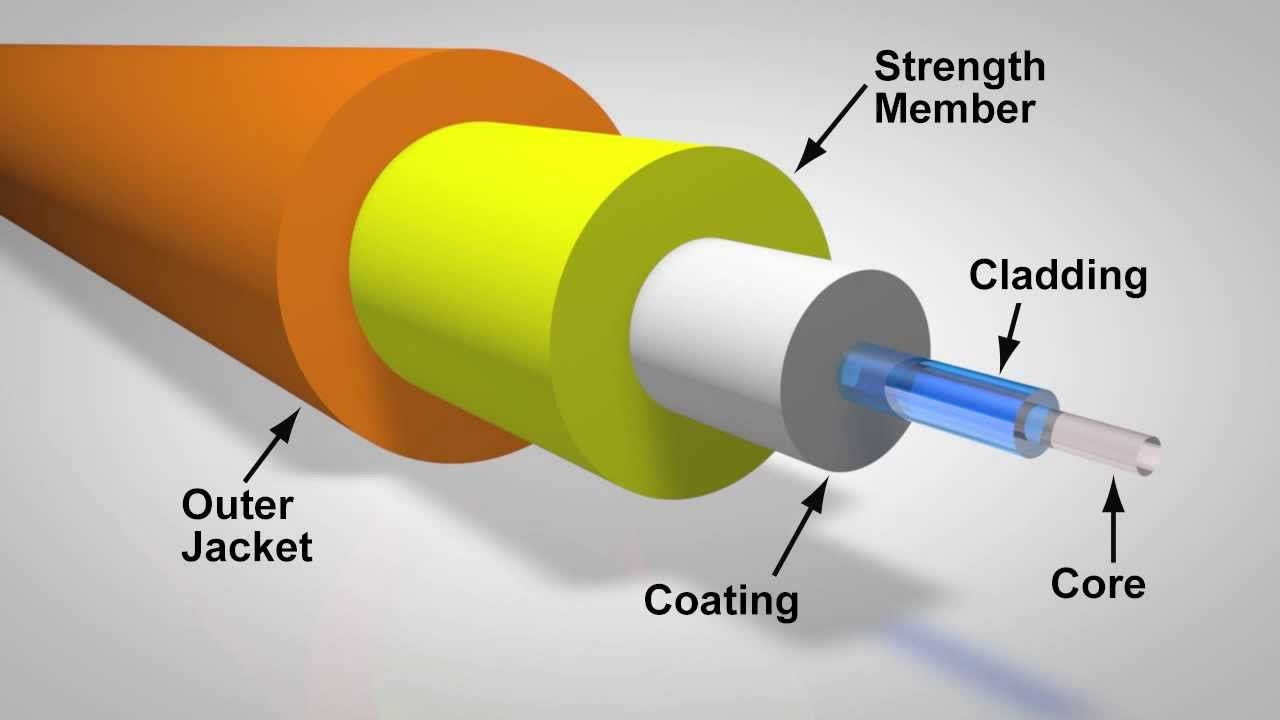What is optical fiber, and how does it work
In the realm of modern communication, optical fiber has emerged as a revolutionary technology, enabling the transmission of vast amounts of data over long distances with incredible speed and reliability. This question aims to delve into the intricacies of optical fiber, exploring its composition, working principles, and applications.
Understanding Optical Fiber:
Optical fiber, also known as fiber optic cable, is a slender, flexible, and transparent medium capable of transmitting light signals over long distances. It is composed of a core, which carries the light signal, surrounded by a cladding layer that helps maintain the light within the core. The entire structure is further protected by an outer jacket or buffer.
Working Principles:
The fundamental principle behind Optical Fiber is total internal reflection. When light enters the fiber at a specific angle within the core, it undergoes multiple reflections off the cladding, which has a lower refractive index. This reflection keeps the light confined within the core, allowing it to travel long distances without significant loss.
Key Components:
- Core: The core of an optical fiber is typically made of high-purity glass or plastic. Its diameter can range from a few micrometers to several hundred micrometers, depending on the application. The core’s refractive index is higher than that of the cladding, facilitating total internal reflection.
- Cladding: The cladding is a layer of lower refractive index material, surrounding the core. It prevents light from escaping the fiber and ensures the total internal reflection occurs. The cladding material is often made of pure silica or plastic.
- Coating: The coating or buffer protects the fiber from mechanical stress, moisture, and damage. It is usually made of a polymer material, providing insulation and strength to the fiber.
Types of Optical Fiber:
- Single-mode fiber: Single-mode fiber has a small core diameter, typically around 8-10 micrometers. It allows only one mode of light to propagate, reducing dispersion and enabling high-bandwidth and long-distance communication.
- Multi-mode fiber: Multi-mode fiber has a larger core diameter, typically ranging from 50 to 62.5 micrometers. It supports multiple modes of light propagation simultaneously. While it offers higher data transmission rates over short distances, it suffers from modal dispersion over long distances.
- Plastic optical fiber (POF): POF is a cost-effective alternative to glass fiber. It utilizes polymers for the core and cladding, offering simplified connectors and lower transmission speeds compared to glass fibers. POF finds applications in home networking, automotive systems, and short-distance communication.
Applications of Optical Fiber:
- Telecommunications: Optical fiber revolutionized long-distance communication, enabling high-speed internet connections, telephone networks, and cable television distribution. It provides greater bandwidth, lower signal loss, and immunity to electromagnetic interference.
- Data Centers: Fiber optics is extensively used within data centers to interconnect servers, storage devices, and networking equipment. It facilitates fast and reliable data transmission, supporting the ever-increasing demand for cloud computing and big data processing.
- Medical Imaging: Optical fiber plays a crucial role in medical imaging techniques such as endoscopy and laparoscopy. It allows for flexible, lightweight, and minimally invasive instruments that can capture high-resolution images inside the human body.
- Sensing and Monitoring: Optical fiber-based sensors are employed in various industries for temperature sensing, strain measurement, and environmental monitoring. These sensors offer high accuracy, immunity to electromagnetic interference, and the ability to cover large areas.
- Defense and Aerospace: Optical fiber finds applications in military and aerospace sectors for secure communication, radar systems, and avionics. Its lightweight nature, high data rates, and resistance to harsh environments make it an ideal choice in these domains.
Conclusion:
Optical fiber has revolutionized the way we communicate and transmit data. Its ability to transmit light signals over long distances with minimal loss and high bandwidth has made it indispensable in various industries. As technology continues to advance, optical fiber will likely play an even more significant role in shaping our interconnected world.
